1 / 6
Czech Philharmonic • New Year’s Concert
For New Year’s Eve, the repertoire will reflect the start of the Year of Czech Music. For the occasion, conductor Jakub Hrůša has made a varied selection of Czech compositions with a solo opportunity for the violinist Jiří Vodička, and at the conclusion, the pianist Olga Kern will commemorate the 100th birthday of Gershwin’s Rhapsody in Blue.
Programme
Antonín Dvořák
Nocturne in B major, Op. 40
Antonín Dvořák
Romance for Violin and Orchestra in F minor, Op. 11 (13')
Leoš Janáček
Lachian Dances (Selections) (6')
Dymák
Pilky
Antonín Dvořák
Mazurek for violin and orchestra, Op. 49 (6')
— Intermission —
Bedřich Smetana
The Bartered Bride, overture to the opera (7')
Oskar Nedbal
Valse triste from the ballet pantomime
The Tale of Simple Johnny (5')
Antonín Dvořák
Suite in A major, Op. 98b (8')
“American Suite”
movements I and V
George Gershwin
Rhapsody in Blue (16')
Performers
Olga Kern piano
Jiří Vodička violin
Jakub Hrůša conductor
Czech Philharmonic
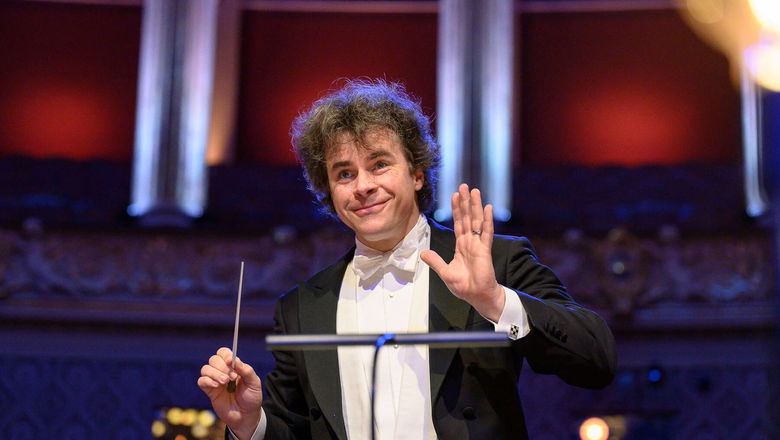
Customer Service of Czech Philharmonic
Tel.: +420 227 059 227
E-mail: info@czechphilharmonic.cz
Customer service is available on weekdays from 9 a.m. to 6 p.m.
Open the Year of Czech Music with us
Dear Listeners,
gift or cancellation vouchers are not accepted for these concerts.
Thank you for your understanding.
Concerts take place in collaboration with the Prague Sounds Festival.

Performers
Olga Kern piano
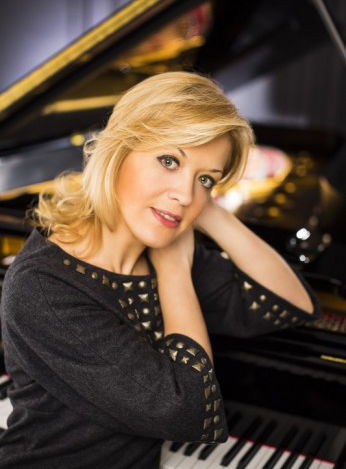
Pianist Olga Kern has established herself as one of the leading pianists of her generations. Born in a family of musicians, she jumpstarted her U.S. career with her historic Gold Medal win at the Van Cliburn International Piano Competition in Fort Worth, Texas as the first woman to do so in more than fifty years.
Prize winner of Concertino Praga competition at the age of eleven; First prize winner of the Rachmaninoff International Piano Competition at seventeen, Ms. Kern is a laureate of many international competitions. In 2016 she served as Jury Chairman of both the Seventh Cliburn International Amateur Piano Competition and the first Olga Kern International Piano Competition, where she also holds the title of Artistic Director. Ms. Kern frequently gives masterclasses and since September 2017 has served on the piano faculty of the prestigious Manhattan School of Music. Beginning with the 2019 season, Ms. Kern was appointed the Connie & Marc Jacobson Director of Chamber Music at the Virginia Arts Festival. Ms. Kern was honored with the Ellis Island Medal of Honor in New York City in 2017.
Recent and upcoming highlights include performances with the Minnesota Orchestra, the symphony orchestras of Baltimore, St. Louis, Dallas, Palm Beach, Milwaukee, Austin and Toledo, the National Symphony of Washington DC, the Iceland Symphony Orchestra, Dublin symphony and many others; or the US tour with the Royal National Scottish Orchestra, the Royal Philharmonic, the National Symphony Orchestra of Ukraine, National Philharmonic of Russia and Warsaw Philharmonic.
In 2017/2018, she served as Artist in Residence with the San Antonio Symphony and went with the Chinese National Youth Orchestra on their tour to China. In 2019 she helped celebrate Leonard Slatkin’s 75th Birthday in a series of special concerts with the National Symphony at the Kennedy Center. She will appear in recitals and concerts in Orford, Sunriver, Fort Worth (Cliburn), Carmel, San Francisco, Dallas, Pecs, Budapest, Lisbon, Milan, Sicily, and Calvia. In the autumn of 2022 Olga Kern has hosted her Third Triennial Olga Kern International Piano Competition. In the coming seasons, she will serve on the jury of many international competitions.
Ms. Kernʼs discography includes her Grammy Nominated recording of Rachmaninoff’s Corelli Variations and transcriptions (2004), Brahms Variations (2007) and Chopin Piano Sonatas No. 2 and 3 (2010), the Tchaikovsky piano concerto with the Rochester Philharmonic, a CD of Russian composers including works by Balakirev; live recording CD of Chopin concerto with the Warsaw Philharmonic; Rachmaninoff cello sonata with Sol Gabetta and the CD of Brahms and Shostakovich Quintets with Dali Quartet. She was featured in several documentaries including the award-winning films about the 2001 Cliburn Competition, “Playing on the Edge”; “They came to play” and “Olga’s journey”.
Jiří Vodička violin
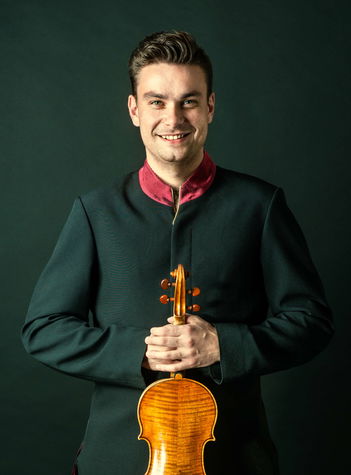
One of the most important and sought-after Czech violinists and the concertmaster of the Czech Philharmonic Jiří Vodička has excelled in a number of competitions since very early on (Kocian International Violin Competition, Prague Junior Note, the best participant at violin classes led by Václav Hudeček, among others). At the unusually early age of 14, he was admitted to the Institute for Artistic Studies at the University of Ostrava, where he studied under the renowned pedagogue Zdeněk Gola. He graduated in 2007 with a master’s degree. His success continued as an adult, for example winning first and second prizes at the world-famous competition Young Concert Artists (2008) held in Leipzig and New York.
He has made solo appearances not only with Czech orchestras like the Prague Philharmonia or the Prague Radio Symphony Orchestra, but also with the Qatar Philharmonic Orchestra, the New Philharmonic Orchestra of Westphalia, and the Wuhan Philharmonic Orchestra. His professional activities are of greater breadth, however. In 2014, he recorded his debut solo album “Violino Solo” on the Supraphon label, and crossover fans can hear him on his worldwide Vivaldianno tour. He has performed chamber music with the outstanding Czech pianists Martin Kasík, Ivo Kahánek, Ivan Klánský, David Mareček, and Miroslav Sekera. He regularly takes part at famous festivals, such as the Prague Spring, Janacek’s May, Grand festival of China and Choriner Musiksommer. He was a member of the Smetana Trio from 2012 to 2018; in 2020 he founded the Piano Trio of the Czech Philharmonic, with which he won the Vienna International Competition in 2021. Many of the concerts of the “Czech Paganini”, as Vodička is sometimes called because of his extraordinary technical skill, have been recorded by Czech Television, Czech Radio, or the German broadcasting company ARD. Besides all of that he teaches at the University of Ostrava.
He plays Italian violin made by Joseph Gagliano in 1767 which he received for long-term use from the Czech Philharmonic’s former chief conductor Jiří Bělohlávek.
Marek Eben host
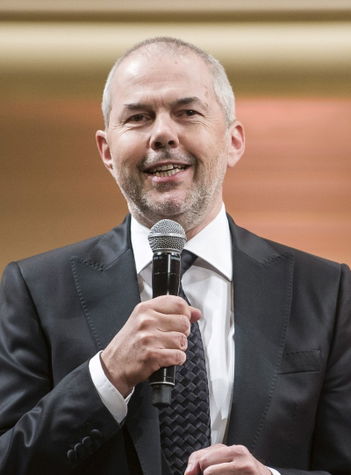
Marek Eben is perhaps best known as a television presenter. He serves as the host of the popular StarDance competition and has been one of the key figures of the Karlovy Vary International Film Festival since 1996. A graduate of the Music and Drama Department at the Prague Conservatoire, Eben is also an accomplished musician.
The son of the late organist and composer Petr Eben, he continues his father’s artistic legacy in his own distinctive way as the sole songwriter for The Eben Brothers, a band that released its sixth album, Co my víme, at the start of the 2023/2024 academic year.
Eben’s work as a composer extends beyond his own ensemble. He has written music for the films Bizon and Hele on letí, as well as for the television series Poste restante. He has also composed music and lyrics for around twenty stage productions, including Othello at Studio Ypsilon and A Winter’s Tale at the National Theatre.
On Czech Television, in addition to StarDance, Eben has appeared in the quiz show The Treasure of Agnes of Bohemia, and his long-running talk show Na plovárně has become a beloved classic. He has twice been the overall winner of the TýTý Award, formerly presented to the most popular television personalities.
Jakub Hrůša principal guest conductor
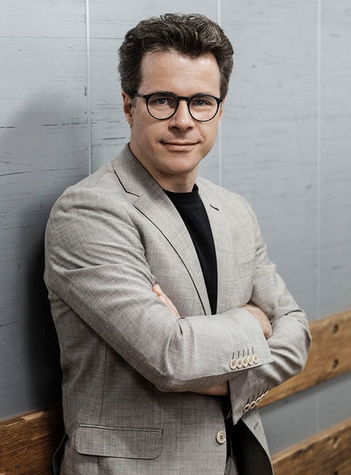
Born in the Czech Republic, Jakub Hrůša is Chief Conductor of the Bamberg Symphony, Music Director Designate of the Royal Opera, Covent Garden (Music Director from 2025), and Principal Guest Conductor of the Czech Philharmonic. He was also formerly Principal Guest Conductor of the Orchestra dell’Accademia Nazionale di Santa Cecilia, the Philharmonia Orchestra, and Tokyo Metropolitan Symphony Orchestra.
He is a frequent guest with the world’s greatest orchestras, including the Vienna, Berlin, Munich and New York Philharmonics; Bavarian Radio, NHK, Chicago and Boston Symphonies; Leipzig Gewandhaus, Lucerne Festival, Royal Concertgebouw, Mahler Chamber and The Cleveland Orchestras; Orchestre Philharmonique de Radio France, and Tonhalle Orchester Zürich. He has led opera productions for the Salzburg Festival (Káťa Kabanová with the Vienna Philharmonic in 2022), Vienna State Opera, Royal Opera House, and Opéra National de Paris. He has also been a regular guest with Glyndebourne Festival and served as Music Director of Glyndebourne On Tour for three years.
His relationships with leading vocal and instrumental soloists have included collaborations in recent seasons with Daniil Trifonov, Mitsuko Uchida, Hélène Grimaud, Behzod Abduraimov, Anne Sofie Mutter, Lisa Batiashvili, Joshua Bell, Yefim Bronfman, Rudolf Buchbinder, Gautier Capuçon, Julia Fischer, Sol Gabetta, Hilary Hahn, Janine Jansen, Karita Mattila, Leonidas Kavakos, Lang Lang, Josef Špaček, Jean-Yves Thibaudet, Yuja Wang, Frank Peter Zimmermann, Alisa Weilerstein and others.
As a recording artist, Jakub Hrůša has received numerous awards and nominations for his discography. Most recently, he received the Opus Klassik Conductor of the Year 2023 prize and the ICMA prize for Symphonic Music for his recording of Bruckner’s Symphony No. 4, and the Preis der Deutschen Schallplattenkritik for his recording of Mahler’s Symphony No. 4, both with Bamberg Symphony. In 2021, his disc of Martinů and Bartók violin concertos with Bamberg Symphony and Frank Peter Zimmermann was nominated for BBC Music Magazine and Gramophone awards, and his recording of the Dvořák Violin Concerto with the Bavarian Radio Symphony and Augustin Hadelich was nominated for a Grammy Award.
Jakub Hrůša studied at the Academy of Performing Arts in Prague, where his teachers included Jiří Bělohlávek. He is President of the International Martinů Circle and The Dvořák Society. He was the inaugural recipient of the Sir Charles Mackerras Prize, and in 2020 was awarded both the Antonín Dvořák Prize by the Czech Republic’s Academy of Classical Music, and – together with Bamberg Symphony – the Bavarian State Prize for Music.
Compositions
Antonín Dvořák
Nokturno op. 40
Antonín Dvořák
Romance for Violin and Orchestra in F minor, Op. 11
From 1862 to 1871, partly during Smetana’s tenure as conductor, Antonín Dvořák (1841–1904) was playing viola in that theatre’s orchestra. By then, he was not only playing viola and organ, but also composing. One of his early works is the Romance for Violin and Orchestra, Op. 11. It is related to the slow second movement of Dvořák’s String Quartet in F minor (1873), which Dvořák recast as a Romance, adding more themes. This may have been done in 1873 or perhaps even as late as 1877, when the violinist Josef Markus, concertmaster of the Provisional Theatre, gave a public performance of the Romance in the concert hall on Prague’s Žofín Island. There are also versions with piano accompaniment, amongst which Dvořák’s authentic version holds a place of honour. He made that arrangement even before publication of the orchestral version (1879). Dvořák later dedicated it to the violin virtuoso František Ondříček. The one-movement composition (Andante con moto) stands out for its melodic beauty and sense of inner calm, which is enhanced by the restrained orchestration.
Leoš Janáček
Lachian Dances (selections)
New Year’s celebrations usually ride a wave of joyous energy, or else they are dance parties, and the overture to The Bartered Bride foreshadowed both of those possibilities. The Lachian Dances by Leoš Janáček (1854–1928) are one of the popular cycles of stylised orchestral dances. They appeared in their original form at the turn of the 1880s and ’90s during the composer’s “folklore period”, and they reflected his interest in ethnography, folk dances, their choreography, and the Lachia region with its typical dialect and peculiar customs. Dvořák’s orchestral Slavonic Dance, which Janáček knew and performed himself in Brno, were another source of inspiration. In the late 1880s, Janáček discussed the possibility of a staged production of the dances, originally titled Wallachian Dances, with Prague’s National Theatre, but nothing came of it. Part of the motivic material found its way into the ballet Rákos Rákoczy. From the 1924 version of the Lachian Dances, our programme includes the third dance Dymák, also called The Blacksmith, and the well-known, boisterous concluding dance Pilky.
Antonín Dvořák
Mazurek for Violin and Orchestra, Op. 49
The title of the Mazurek for Violin and Orchestra, Op. 49, by Antonín Dvořák makes reference to the Polish mazurka, and it borrows certain elements from that dance, but it is a virtuosic showpiece with two contrasting themes, the first rhythmically bold and second lyrical. The work was written at the suggestion of the publisher Simrock, who asked Dvořák for some sort of smaller-scale work (that would be easy to sell) in the style of the Slavonic Dances. The original version for violin and piano dates from 1879 and was premiered in late March of that year at a concert presented by the Music Department of the Artists’ Society, where the violinist Ferdinand Lachner played it with Zdeněk Fibich. A version for violin and small orchestra soon followed. One proof of fact that a small form does not necessarily mean small importance is the dedication of the Mazurek to the famed violinist Pablo de Sarasate and the inclusion of the composition on several programmes with Dvořák accompanying Lachner during Dvořák’s “farewell tour” in 1892 before his departure for America.
Bedřich Smetana
The Bartered Bride, overture to the opera
As the Year of Czech Music, 2024 will be above all the 200th anniversary of the birth of Bedřich Smetana (1824–1884), while other important anniversaries—120 years since Dvořák’s death, 170 years since Janáček’s birth, and 150th birthdays of Nedbal and Suk—may be overshadowed. The Czech Philharmonic’s New Year’s Concert, however, is a celebration that will not overlook any of them, although Smetana gets the first word. Few compositions in the treasury of classical music are as familiar to listeners as the Overture to The Bartered Bride (1863). Contrary to the usual procedure, it was with the overture that Bedřich Smetana began work on his second opera, this time a comedy (a “plaything”, as he put it, in comparison with the previous, more serious opera The Brandenburgers in Bohemia). He wrote the overture in sonata form and connected it motivically to the end of Act II. The Bartered Bride was first played on the stage of the Provisional Theatre on 30 May 1866, and it had been performed there more than 110 times before the theatre ceased operations on 14 April 1883.
Oskar Nedbal
Valse triste from the ballet pantomime The Tale of Simple Johnny
Valse triste by Dvořák’s pupil Oskar Nedbal (1874–1930) suggests more serious associations, subconsciously reminding us of Nedbal’s tragic death. However, the world-famous waltz dates from the beginning of the century, when the January 1902 performance of his ballet-pantomime The Tale of Simple Johnny at the National Theatre was added to the list of his successes as a composer (Nedbal was also a violist and a talented conductor). Based on a scenario by František Karel Hejda, the work also attracted the interest of the Court Opera in Vienna, and Nedbal was asked to add a few new dance numbers. Valse triste is said to have been written aboard a train travelling from Barcelona to Vienna. This would have been nothing unusual giving the hectic touring of the Bohemian Quartet, of which Nedbal was a founding member… A production of part of The Tale of Simple Johnny in Vienna (premiered on 28 April 1903) with dazzlingly beautiful sets and costumes took place before an aristocratic audience. Sadly, the composer was far from being so fortunate in his family life: it was in 1903 that his young wife Josefina died.
Antonín Dvořák
Suite in A major, Op. 98b “American Suite” (selections)
Antonín Dvořák composed his Suite in A major, Op. 98b, during the early months of 1894 while still in America. A piano work of intimate character, it consisted of five contrasting movements. Dvořák’s friend Josef Sallač later described the suite as “a work of Dvořákian charm and originality, both for the sincerity of its moods and for its thematic ideas, which mostly retain a certain American character.” The composer himself was certainly aware of this, and he arranged his Suite in A major for orchestra a year later. The first movement (Andante con moto) and the second (Molto vivace) are in ABA form, and the third (Moderato alla polacca) is stylised as a polonaise or as a Czech dance called the sousedská. There follows a subtle Andante, then finally the concluding movement (Allegro) brings the pentatonic theme of the first movement back into play. The orchestral version was not premiered until 1910 by the Czech Philharmonic under the baton of Karel Kovařovic.
George Gershwin
Rhapsody in Blue
The attentive reader will certainly not miss that most of the pieces on today’s programme have both an orchestral version and a more intimate version either for piano or for solo instrument with piano. Rhapsody in Blue by the American composer George Gershwin (1898–1937) also took a complicated path to reach its final form. Gershwin wrote it for two pianos, but pianist and arranger Ferde Grofé created an accompaniment for a small ensemble. Things did not end there. As the work grew in popularity, so did the size of the orchestra. Today, the 1942 version is usually played. The jazz-influenced Rhapsody has no connection to the other birthday celebrations, but it also has its own jubilee this year: 100 years since its premiere (New York, 1924). It might seem like a ferocious way to end a programme that is based in the second half of the 19th century and ventures no farther than the first two decades of the 20th, but as Gershwin himself said, “In the rhapsody I tried to express our manner of living, the tempo of our modern life with its speed and chaos and vitality.”